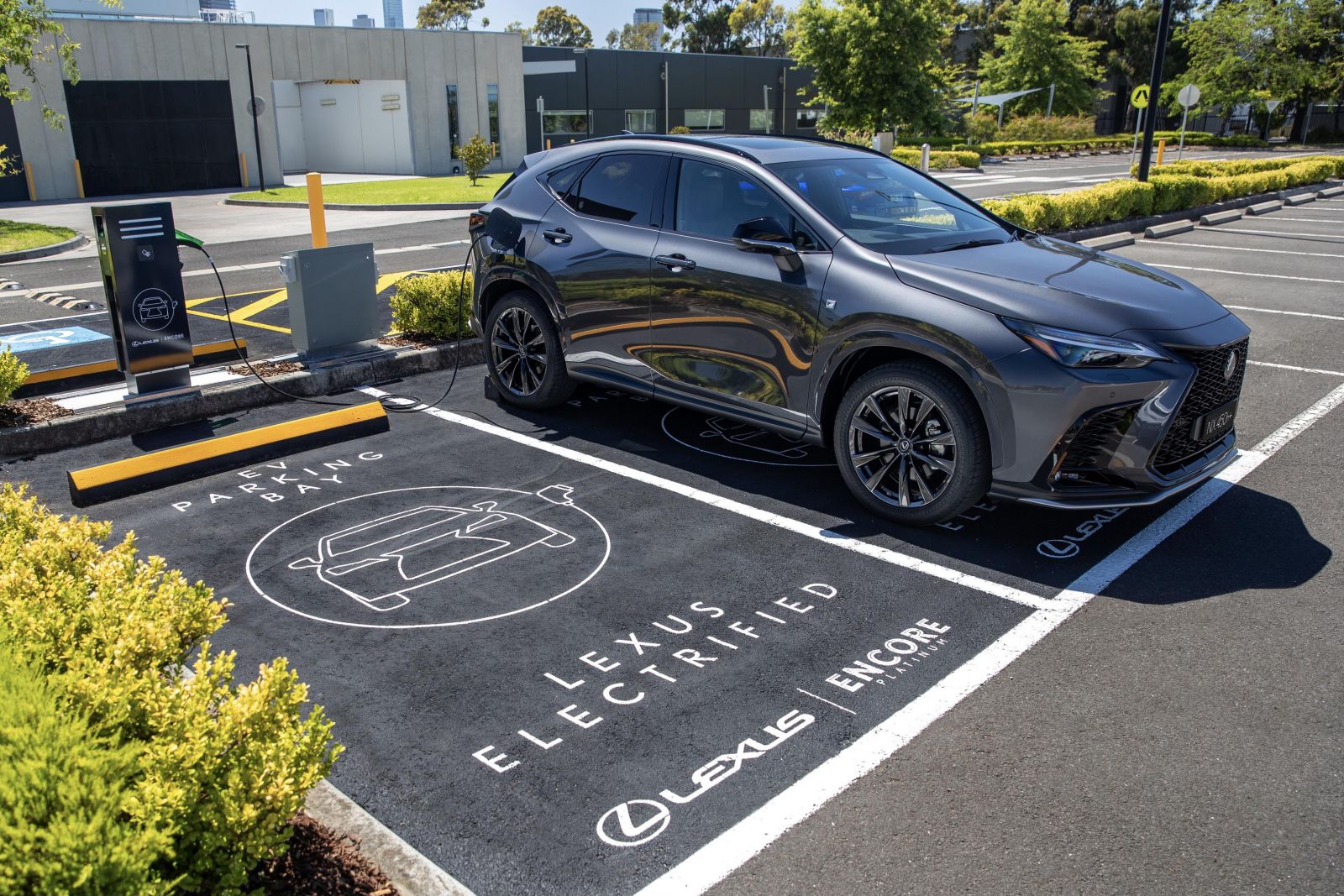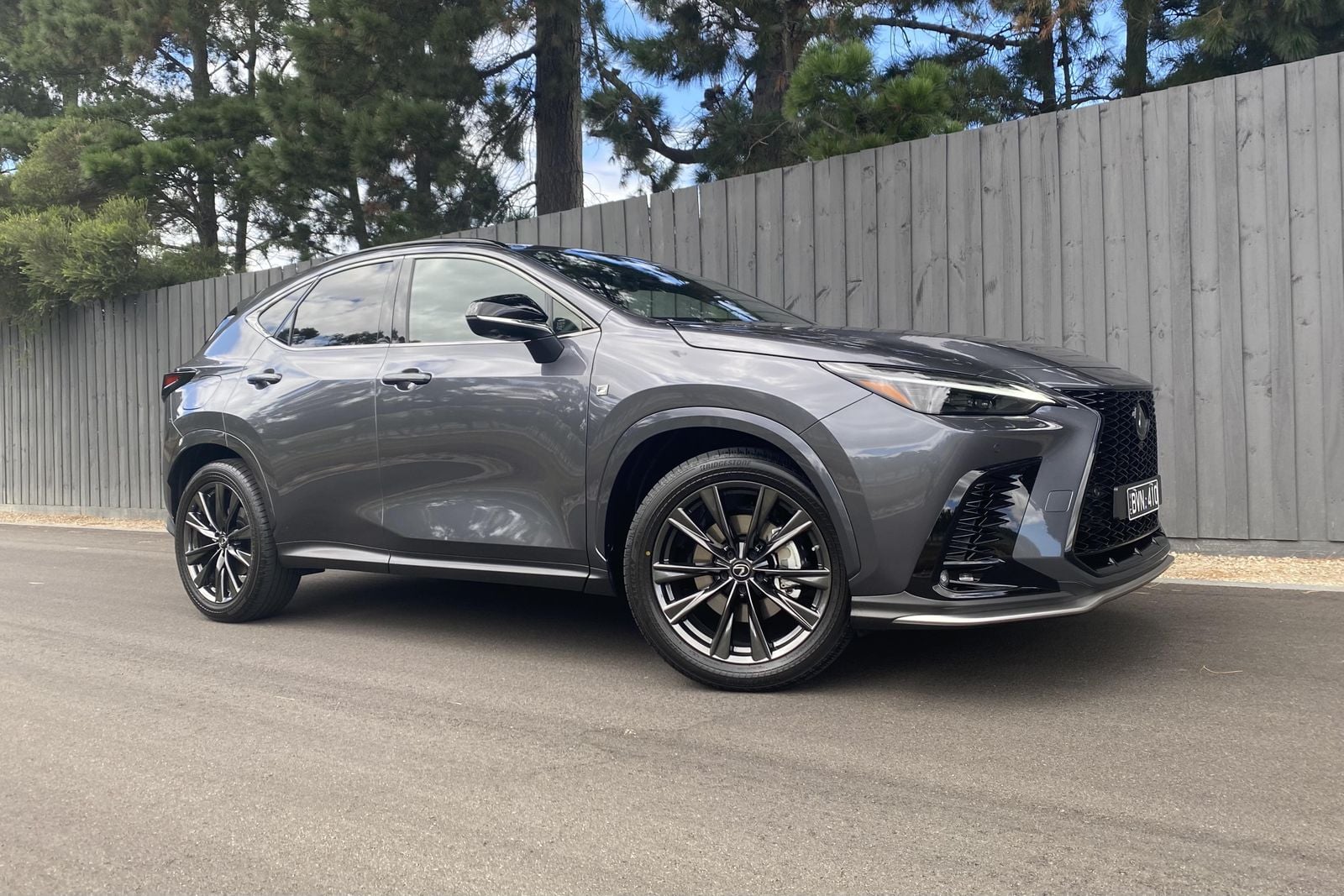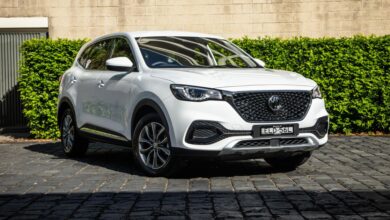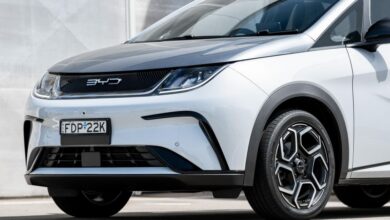2022 Lexus NX450h+ PHEV review
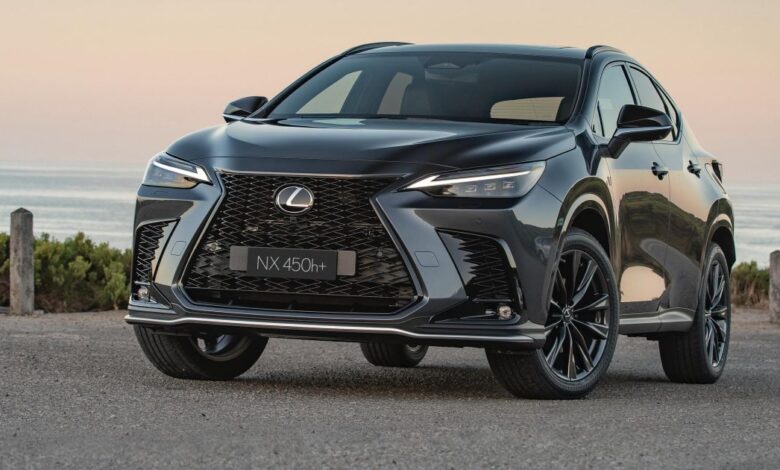
As the long-standing leader in premium hybrid cars, Lexus has taken the natural – and some would say well overdue – step into more advanced plug-in hybrids (PHEVs).
Predictably its first PHEV is based on its top-selling model, the second-generation NX mid-size SUV, sharing much with the highly-regarded Toyota RAV4 Prime that is not sold here.
The new petrol and hybrid NX family (as reviewed here) are real improvements on the old model. As the range flagship, Lexus NX450h+ PHEV promises to be more impressive again.
While PHEVs occupy a niche in the Australian market, easily outsold by battery electric and milder hybrid cars alike, they are nevertheless proliferating on account of growing uptake around the globe – and growing interest here.
While not for all and sundry, people keen on a daily all-electric drive experience mixed with reassuring petrol backup for trips to the country would do well to at least do some homework.
This review is based on a quick spin at the national range-wide NX press event last week. We will get one through our CarExpert garage as soon as we can for a deeper analysis, looking in greater depth at things like EV range, real-world petrol use, and charging feedback.
How much does the Lexus NX450h+ cost?
The flagship NX450h+ F Sport costs $89,900 before on-road costs in its single F Sport specification grade, which in context is not an unrealistic impost: the NX350h hybrid in F Sport form costs between $77,800 and $83,900 depending on your level of options packs.
It bisects less premium fare such as the Peugeot 3008 GT Sport Plug-In Hybrid AWD ($79,990) and larger Kia Sorento PHEV ($80,330); and the pricier Mercedes-Benz GLC300e ($95,700), BMW X3 xDrive30e ($104,900), and updated Volvo XC60 Recharge.
Lexus offers less well-specified NX450h+ grades in Europe – with a smaller screen and wheels (among other omissions) – where there are incentives to buy PHEVs, and if at some point they were to come here, the price would come down further (perhaps below $80k RRP).
What do you get?
Standard features largely echo those of the NX350h F Sport hybrid model, with a few extras.
The main equipment list as per the Lexus spec sheet comprises:
- 20-inch alloy wheels
- Heated side mirrors
- Single-row sunroof
- Roof rails
- Privacy glass
- Powered tailgate with kick sensor
- Proximity key access
- Supplied AC cables x 2 with Type 2 plug
- Tri-beam adaptive LED headlights
- Digital rear-view mirror
- Projecting head-up display
- “Hey Lexus!” natural speech recognition
- Dual-zone climate control
- Heated steering wheel
- 360-degree camera view
- Wireless phone charger
- 14.0-inch touchscreen
- Cloud-based connected satellite navigation
- Apple CarPlay and Android Auto
- 10-speaker sound system
- Powered, heated and cooled front seats with driver-side memory presets
- Real leather-accented seat trim
The main omission of note is the NX350h Sports Luxury grade’s superior 17-speaker Mark Levinson sound system. Certain other grades also come with the option of a panoramic sunroof.
Is the Lexus NX450h+ safe?
There is no ANCAP safety rating for the new NX yet. The old model scored five stars with a 2017 date stamp.
Standard passive and active safety features include:
- 10 airbags
- Safe Exit Assist (stops doors opening when oncoming parallel objects detected)
- Emergency Steering Assist (swerve assist in emergencies)
- Adaptive cruise control with expanded Road Sign Assist
- AEB with pedestrian/cyclist (day)/junction assist
- Blind-spot monitor
- Rear cross-traffic alert
- Parking Support with brake, including front and rear sensors
- Lane-keeping and lane-centring aids
- Lexus Connected Services including:
- (SOS) Emergency Call
- Automatic Collision Notification
- Stolen Vehicle Tracking
What is the Lexus NX450h+ like on the inside?
Lexus interiors always feel well-made with high-quality, tactile materials, but where the new NX moves forward is in the realm of interior tech.
The vast 14.0-inch screen works via touch rather than a fiddly trackpad controller, offers smartphone-like swiping and pinching, and processed commands swiftly without glitches.
Ventilation shortcuts are built into a toolbar at the bottom of the screen, while shortcuts to key functions (navigation, media and audio, phone, vehicle settings) are accessed via the vertical menu bar along the right-hand side.
There are PHEV-specific set of menus and drivetrain diagrams to cycle through, too.
There’s also a single rotary dial for volume control, and two for temperature control, the latter fitted with very slick digital temperature readouts that change as you spin. It’s a small, rather delightful touch.
The conversational voice recognition system proved handy. Say “Hey Lexus” or press the small microphone icon, and instruct away. If you say “I’m cold” it turns up the heat, and if you say “open the sunroof” it does just that – much like Mercedes-Benz’s MBUX.
This system can distinguish between the driver and front passenger, who can also lob requests. So, if the front passenger asks for the window to be lowered, the left-hand side pane drops.
Another thing Lexus does well are seats, which proved supremely comfortable and also frankly act as design centrepieces.
Each wheel spoke has touch-sensitive pads that help you scroll through settings in the large, colour head-up display (HUD). The integration seemed overly fiddly at first, but I warmed to it.
Beneath the HUD is a digitised TFT instrument cluster with the typical centralised dial able to be customised to show three different display layouts: tachometer, analogue speedo, or hybrid system live drive data. All change depending on drive mode.
Other driving functions including the starter button, drive mode select button and rotary dial, as well as the stubby shift lever, are quite neatly arranged on the dashboard nearest to the steering wheel. The centre fascia is also distinctly driver-oriented.
Other highlights available as standard or options include ambient lighting; specific ornamentation; and an ‘e-latch’ switch to exit the car instead of a handle (exterior handles are rigid, with a button).
Storage options include a sliding Qi pad-covered tray below the centre dash, two tunnel cupholders, and a two-sided-opening centre console. Small touches like the felt-lined cubbies are always commendable and promise a luxury feel.
The main gripe I found came down to headroom which, when coupled with the sunroof, was never as ample as I’d like. Granted, I’m 194cm (6ft 4), but nevertheless, I didn’t love that my head rubbed against the roof lining.
The back seats come standard with vents, USB-Cs and a 12V, and armrests with cupholders, and they offer legroom and knee room for two adults. Naturally, ISOFIX and top-tether points are to be found back there. Again, headroom for tall folk is tighter than what would be ideal.
Extra space has been liberated behind the rear-seat backrest, with 520 litres of luggage volume regardless of variant, which expands up to 1411 litres with the rear seats stowed. This is the same as the other, non-PHEV models.
There are open tubs below the floor but, alas, that’s because there’s no spare tyre or even patch kit. All models use run-flat tyres, instead.
What’s under the bonnet?
The petrol engine is the same 2.5-litre naturally-aspirated unit as found in the NX350h (codenamed A25A-FXS), but detuned slightly to 136kW and 227Nm. It runs the efficiency-focused Atkinson cycle.
Paired with this is a 134kW/270Nm front e-motor and 40kW/121Nm rear e-motor; which are powered by a 355.2V, 96-cell and 18.1kWh capacity lithium-ion battery pack under the floor, meaning no loss of boot space. The transmission is an e-CVT.
A refrigerant-type battery cooling system is used, using a thermal conductive sheet to circulate the cooling system. A PHEV-specific control unit has been designed to be compatible with the higher output of the larger battery.
Lexus quotes a maximum system power output of 227kW (a tick over 300hp) because the engine and motors don’t all go full-bore simultaneously and there are losses. At 2050kg, its kerb weight is some 180kg heavier than the NX350h AWD with its smaller battery pack.
The key figures look impressive: a zero to 100km/h dash in 6.3 seconds (1.4sec faster than the normal 350h hybrid, 0.7sec faster than the 2.4-litre turbo-petrol NX350), fuel efficiency of 1.3 litres per 100km using 95 RON, CO2 emissions of 29g/km, and a claimed pure-electric driving range of 87km.
However there are some flaws with these claims. That driving range is based on the lenient NEDC cycle, with the circa-70km European-market WLTP mixed-loop figure a better guide. The USA’s EPA measure says 60km. Regardless, it still eclipses older PHEV designs out there.
Your best chance of nudging the 87km EV claim is doing urban loops with lots of stopping and starting, at which time the car’s battery benefits from brake-energy recuperation.
Meanwhile the fuel economy claim is always an issue with PHEVs, because its achievability is contingent on having a full battery charge when you leave. Once depleted, the NX450h+ reverts to driving like a normal hybrid car, but with a weight impost.
In other words, on a 500km road trip you have precisely zero chance of averaging 1.3L/100km unless you recharge every 100km or so. The upside of course is you can just top up the 55L tank at a servo in minutes, instead.
The best way to charge your PHEV is at home rather than at a rapid charger, hence the lack of a CCS DC plug. You can charge it overnight on a three-prong wall socket, but Lexus will supply a complimentary home AC wallbox that cuts time to a claimed 2.5 hours.
Buying a PHEV is not necessarily a decision motivated solely by fuel savings, which would take a great deal of time to offset the price premium over a normal hybrid.
Rather, buyers ought to look at the other benefits around performance and zero-emission commuting.
How does the Lexus NX450h+ drive?
As is common with PHEVs, there are various driving modes or programs to cycle through, each of which change the car’s behaviour. You can do so by pushing the piano black buttons along the tunnel next to the cupholders.
Default is EV Priority which operates the NX on electric power alone until the battery state of charge has dropped to a point where it can no longer shift the car on its own. The petrol engine is only supposed to kick in if you exceed 135km/h, use the defogger, or you’re in extreme weather.
Auto EV/HV Mode tells the car to drive in a manner similar to the EV Priority mode but automatically adds jolts of petrol assistance when you mash the accelerator, when all 227kW are needed. The instant zap of EV torque gets you rolling, meaning you take off smoothly and swiftly.
HV mode essentially mirrors the operation of the NX350h hybrid whereby the near-depleted battery charge level is kept steady through brake-regen and redirected petrol-generator power. When the battery is depleted from driving in EV priority mode, the system will automatically revert to HV.
The Battery Charging Mode is there to tell the petrol engine to generate power and recover the battery’s state of charge to the level required for EV driving – useful in Europe where you might be heading to a zero-emission region after a long highway jaunt.
The long and short of things is that the NX at best behaves like a torque-rich and silent BEV, and at worst like a Lexus hybrid with a slight load on board. And, anyone who’s driven the latest Lexus hybrids knows they’re far more refined and punchy than they used to be.
The ‘E-Four’ all-wheel drive (AWD) system using two motors offers a variable torque distribution ratio allowing drive to be split from 100:0 front/rear, to a rear-biased 20:80. It’s front-biased at first, and the front-rear torque distribution can be displayed on the multi-information display.
The TNGA-based NX uses MacPherson strut and double-wishbone rear suspension, electric power steering with an 11.6m turning circle, ventilated disc brakes at both ends, and suspension/damper settings that adjust characteristics.
On good roads it felt smooth and quiet, and based on early impressions offered a more cohesive and dynamic balance of bump absorption, steering response (low in feel/feedback but predictable) and body control against cornering forces compared to its predecessor.
However I did notice a bit of firmness at low speeds over rapid corrugations, which might be down to the run-flat tyres, and once I went from the smooth Peninsula Link in Victoria onto some gnarly, coarse-chip regional B-roads, the noise level permeating into the cabin grew.
When we get some NXs on longer loans I want to more closely investigate the real-world consumption, measure NVH, and revisit the low-speed corrugated-road bump absorption.
Even so, it’s unquestionably a better drive than the old NX, which was frankly a bit average in this department.
How much does the Lexus NX450h+ cost to run?
Every Lexus has a five-year, unlimited kilometre warranty and a 10-year battery warranty in electrified models like the NX450h+.
Capped-price servicing for three years or 45,000km is set at $495 per visit on all grades. The NX can be collected from the owner’s home or place of work, with a complimentary loan vehicle delivered door to door.
Lexus Australia is rolling out a new smartphone app that lets owners track, check up on, and control aspects of their vehicle from the couch. Always a leader in customer care in-person, it clearly hopes to take this into the digital realm too.
People who buy the NX450h+ will be provided with an installed home wall charger, and a range of added benefits like the chance to borrow other Lexus vehicles from dealers or airport valets when on holiday. Read all about the perks in our separate story here.
In short, one of the biggest perks of owning a Lexus, notably in PHEV form with access to its Encore Platinum program, is being looked after really well beyond purchase time.
CarExpert’s Take on the Lexus NX450h+
The Lexus NX450h+ is a largely impressive halo product for the brand’s top-selling model, which builds on its hybrid leadership and offers daily EV driving at a price premium many will find acceptable.
Based on early feedback, it seems likely that demand will exceed supply, which is a familiar problem these days but one that suggests Lexus’s product planners have got this one about right.
Handsome, well-equipped, high-tech, smooth and punchy, it’s also a compelling alternative to the European equivalents, backed by near-unbeatable levels of customer care.
I’m looking forward to a longer drive soon, but initial feedback is largely positive.
MORE: 2022 Lexus NX (250, 350, 350h) review
MORE: Everything Lexus NX



















